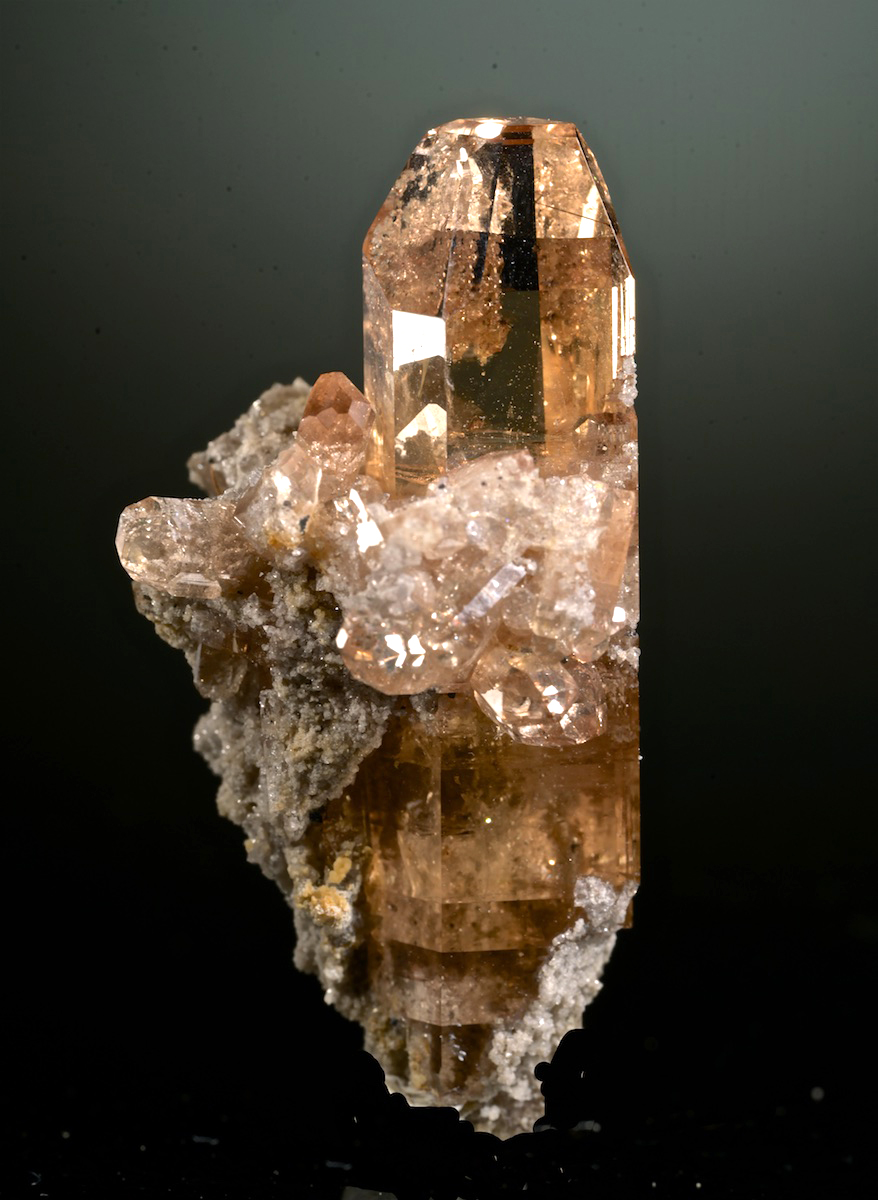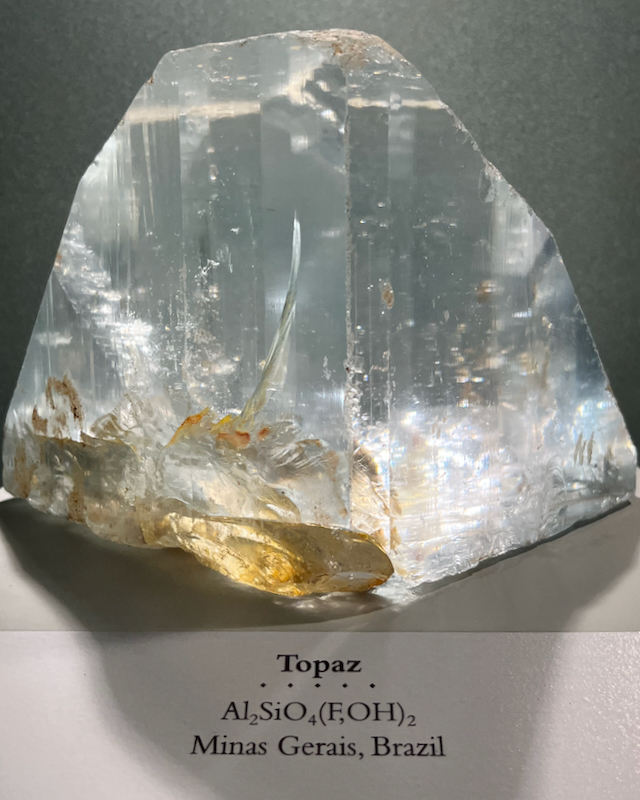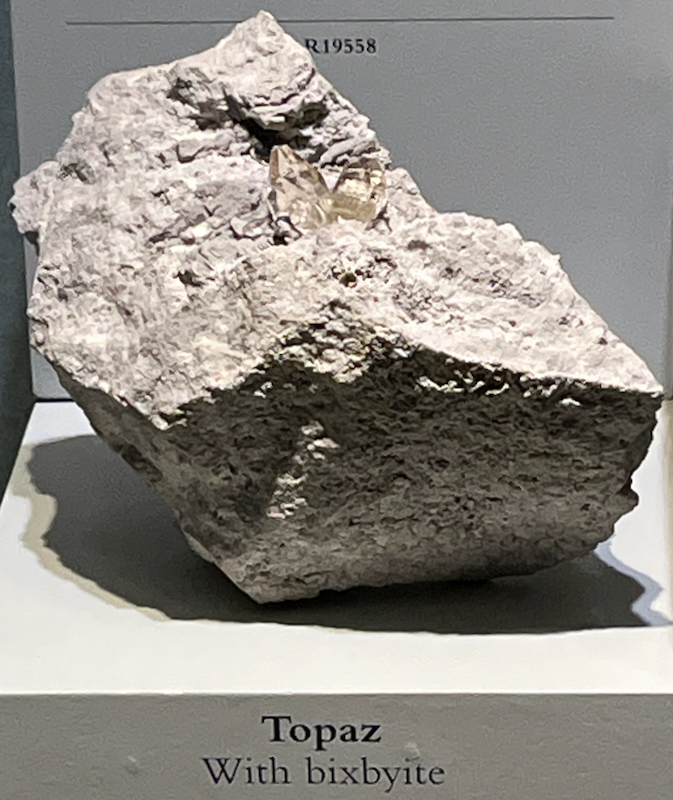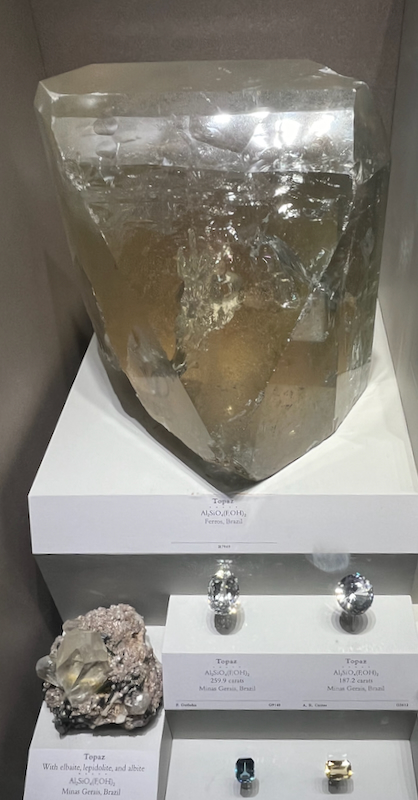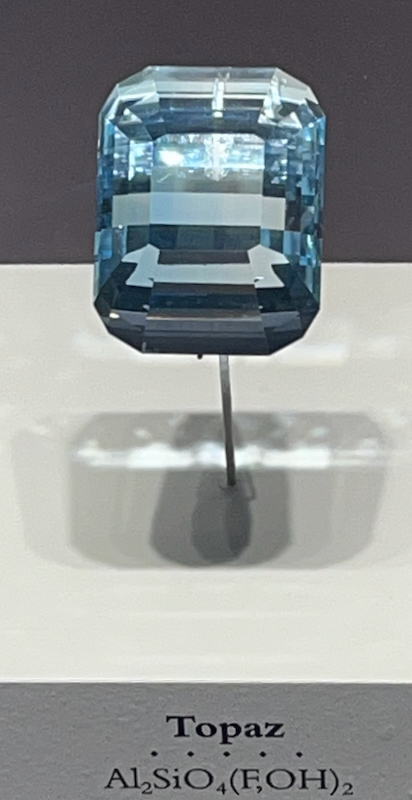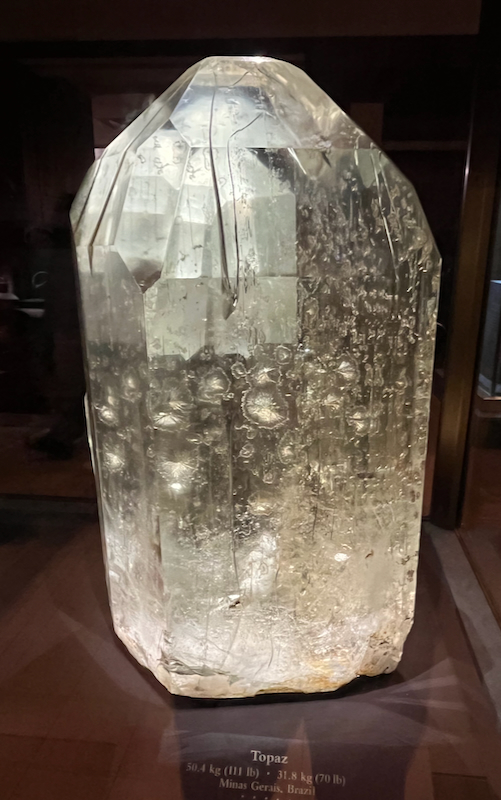Topaz
Like elbaite (tourmaline), topaz is a silicate gemstone that comes in many different colors—colorless, blue, green, yellow, brown, pink, red, etc.—but the color is often pretty light. Blue is the most common color for topaz, but a lot of the time that color isn’t natural; it’s caused by exposing other colors of topaz to radiation and/or heating them until they turn blue. Its crystals are often either chisel-shaped or thick and blocky with one wide, glassy facet at the tip that gives you a view into the crystal. Its hardness of 8 on the Mohs scale means it holds up well in jewelry, but not as well as a ruby or a diamond. Topaz is found around the world—southern Asia, Africa, Russia—but the biggest source of topaz these days is Brazil, in the famous Minas Gerais area. Not only is there a lot of topaz there, sometimes the crystals there are as big as a basketball! One interesting source of topaz in the United States, which is open to the public, is Topaz Mountain in Utah. The mountain is well named because the whole thing is made of a kind of volcanic rock called rhyolite that, in this case, has a lot of topaz crystals in it! The crystals there have an unusual brownish-red “sherry” color (named after the alcoholic drink) that will disappear if you leave the crystals out in the sun. As soon as you find the crystals, you need to wrap them up and hide them away from sunlight so they don’t lose their color.
| Formula | Group or Type | Shape | Hardness | Specific Gravity | Streak | Luster |
|---|---|---|---|---|---|---|
| Al2SiO4F2 | — | Orthorhombic | 8 | 3.4–3.6 | White | Vitreous |
